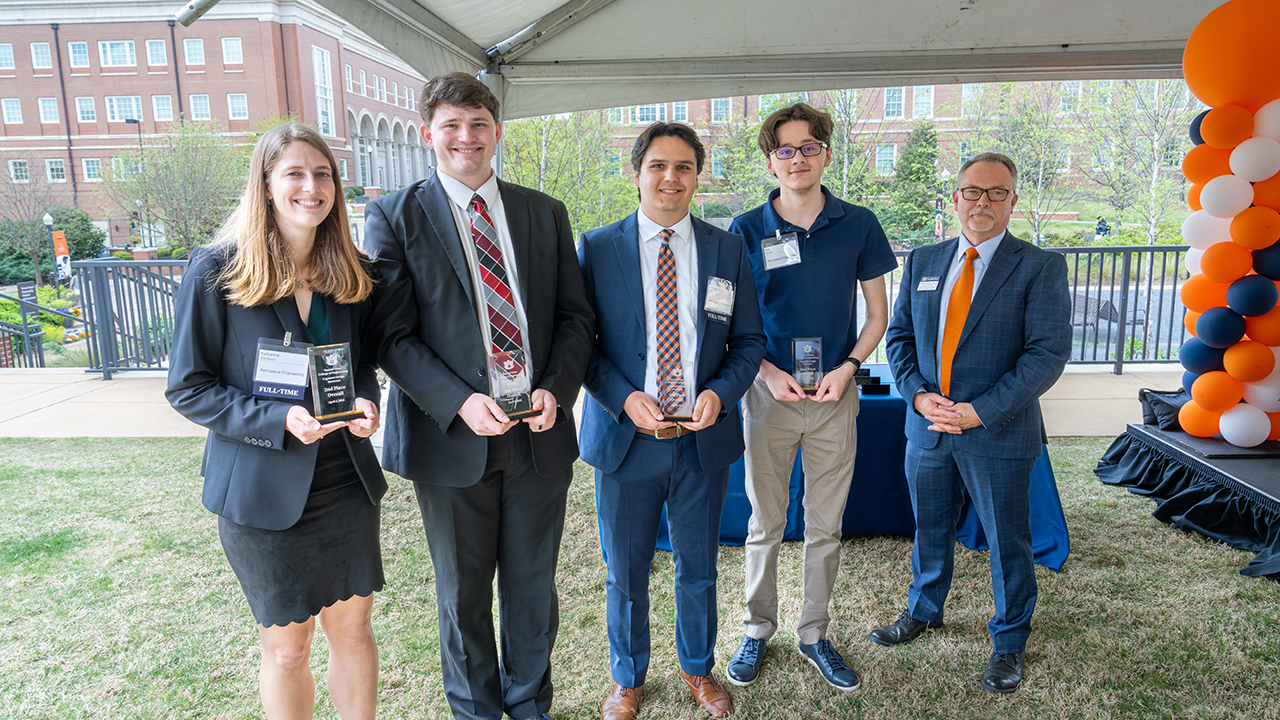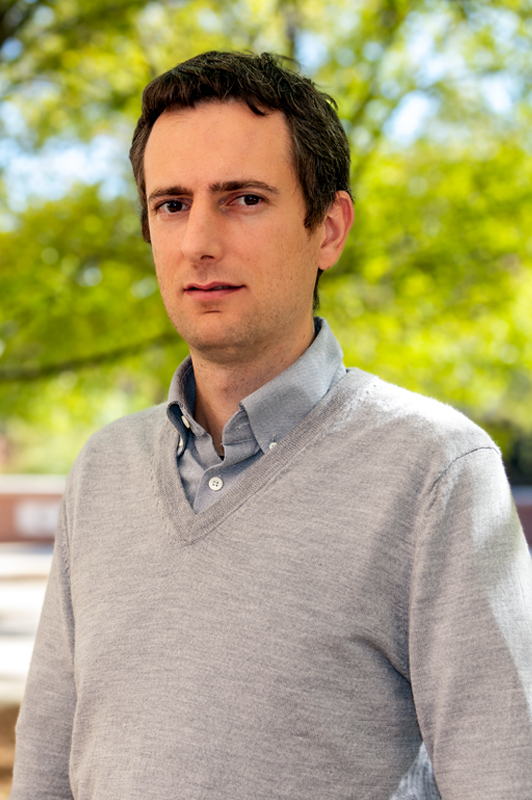Aerospace engineering students named finalist at NASA RASC-AL Competition
Published: Apr 16, 2025 11:00 AM
By Caitlyn Griffin
Featured on NASA’s official website, a team of Auburn aerospace engineers was named a finalist at the 2025 Revolutionary Aerospace Systems – Academic Linkage (RASC-AL) competition among 13 teams from other institutions.
“I had been checking their website and my email all morning, knowing they were announcing the finalists soon,” Katherine Clemmons said. “When I got the email, I was extremely excited that we were moving on in the competition and slightly nervous about the continued design revisions we need to make before the competition forum in June.”
Ayden Kemp, Chris Raj, Kai Gutjahr and Clemmons — all undergraduate students in the Department of Aerospace Engineering — created DEMETER, Dynamic Ecosystems for Mars ECLSS Testing, Evaluation and Reliability, which is a proposal for the Human-Mars precursor campaign.
Clemmons said the two-year proposed mission would demonstrate the transfer of plants to Mars. Additionally, it would show the propagation of plants in an enclosed capsule on the Martian surface, the assimilation of Martian carbon dioxide into edible biomass while producing oxygen and the phytoremediation of wastewater in preparation for the use of this biological life support system (BLSS) on crewed missions to Mars
The students proposed that duckweed would remove more than 90% of waste from wastewater, recover nearly all oxygen from carbon dioxide and recycle nutrients like carbon and nitrogen — which are typically lost in current environmental control and life support systems that produce food.
“It is awesome to know that regardless of how the competition goes, our design will be listed among the finalists in the competition archives,” Clemmons said. “I know how much we have looked at previous teams who competed when we were starting our proposal for the competition, and to know that this time next year, other teams may look to our technical paper and presentation for inspiration is very fulfilling.”
The RASC-AL competition’s goal is to encourage innovation among university students, undergraduates and graduates alike, and academic institutions. It provides an avenue for students to share their ideas with aerospace industry leaders while NASA hopes to cultivate new concepts and technologies for future space exploration.
In the final stage, each team will prepare and submit a comprehensive technical paper outlining their designs, methodologies and expected impacts. Then, in June, they will present their concepts to a panel of NASA and industry experts for deliberation and discussion.
The top two winning teams will have the opportunity to showcase their designs at a major aerospace conference, such as the American Institute of Aeronautics and Astronautics ASCEND Conference, with travel expenses covered.
According to RASC-AL program coordinator and senior NASA space systems engineer Daniel Mazanek, the competition is not simply an academic exercise. The students are actively contributing to real-world solutions for challenges NASA currently facing.
“Reaching the finals is a testament to their abilities and, I hope, inspire them to pursue even more ambitious goals in their careers,” said Davide Guzzetti, associate professor in aerospace engineering. “This experience allows students to connect with peers from other universities and senior NASA professionals who have contributed to space missions – giving them a opportunity to build a network that extends beyond Auburn.” Media Contact: , cvg0007@auburn.edu,
“I had been checking their website and my email all morning, knowing they were announcing the finalists soon,” Katherine Clemmons said. “When I got the email, I was extremely excited that we were moving on in the competition and slightly nervous about the continued design revisions we need to make before the competition forum in June.”
Ayden Kemp, Chris Raj, Kai Gutjahr and Clemmons — all undergraduate students in the Department of Aerospace Engineering — created DEMETER, Dynamic Ecosystems for Mars ECLSS Testing, Evaluation and Reliability, which is a proposal for the Human-Mars precursor campaign.
Clemmons said the two-year proposed mission would demonstrate the transfer of plants to Mars. Additionally, it would show the propagation of plants in an enclosed capsule on the Martian surface, the assimilation of Martian carbon dioxide into edible biomass while producing oxygen and the phytoremediation of wastewater in preparation for the use of this biological life support system (BLSS) on crewed missions to Mars
The students proposed that duckweed would remove more than 90% of waste from wastewater, recover nearly all oxygen from carbon dioxide and recycle nutrients like carbon and nitrogen — which are typically lost in current environmental control and life support systems that produce food.
“It is awesome to know that regardless of how the competition goes, our design will be listed among the finalists in the competition archives,” Clemmons said. “I know how much we have looked at previous teams who competed when we were starting our proposal for the competition, and to know that this time next year, other teams may look to our technical paper and presentation for inspiration is very fulfilling.”
The RASC-AL competition’s goal is to encourage innovation among university students, undergraduates and graduates alike, and academic institutions. It provides an avenue for students to share their ideas with aerospace industry leaders while NASA hopes to cultivate new concepts and technologies for future space exploration.
In the final stage, each team will prepare and submit a comprehensive technical paper outlining their designs, methodologies and expected impacts. Then, in June, they will present their concepts to a panel of NASA and industry experts for deliberation and discussion.
The top two winning teams will have the opportunity to showcase their designs at a major aerospace conference, such as the American Institute of Aeronautics and Astronautics ASCEND Conference, with travel expenses covered.
According to RASC-AL program coordinator and senior NASA space systems engineer Daniel Mazanek, the competition is not simply an academic exercise. The students are actively contributing to real-world solutions for challenges NASA currently facing.
“Reaching the finals is a testament to their abilities and, I hope, inspire them to pursue even more ambitious goals in their careers,” said Davide Guzzetti, associate professor in aerospace engineering. “This experience allows students to connect with peers from other universities and senior NASA professionals who have contributed to space missions – giving them a opportunity to build a network that extends beyond Auburn.” Media Contact: , cvg0007@auburn.edu,

From left to right, Katherine Clemmons, Ayden Kemp, Chris Raj and Kai Gutjahr pose for a photo when finishing second in Samuel Ginn College of Engineering Capstone Design Showcase in April. Dean Hendrix, associate dean for undergraduate studies and program assessment, is to the far right.


